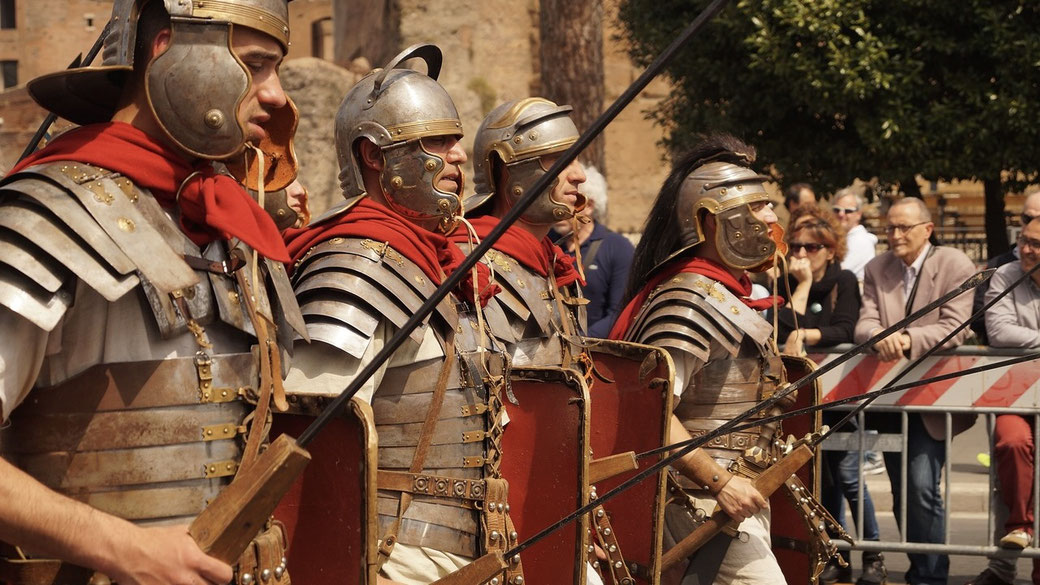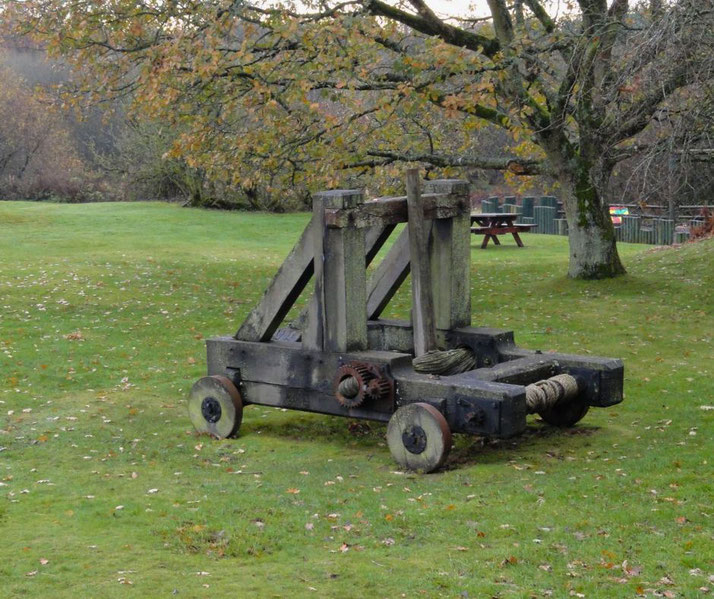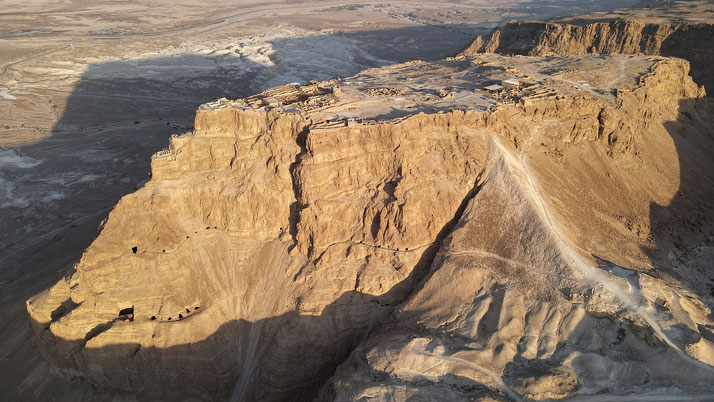How did the Romans besiege and capture cities?

Roman commanders captured fortified settlements by using engineering skill with military discipline and applying deliberate psychological pressure.
While they could rely on simple brutal strenght, they had a range of calculated strategies that could be used to weaken, isolate, and ultimately overpower their enemies.
What is a 'siege'?
A siege is a method of warfare in which an army surrounds a fortified city or stronghold in order to cut it off from outside help, take away its supplies, and force the defenders into surrender or destruction.
Roman generals frequently resorted to siege warfare when diplomacy failed or when a settlement posed too great a threat to be left intact.
The Roman army encircled the targeted location with a ring of troops and temporary defences that cut off food, water, and reinforcement.
Over time, this blockade led to shortages and reduced morale within the city walls.
In many cases, the psychological toll of encirclement, combined with hunger and disease, weakened the defenders before any weapons were used to breach the walls.
To further reduce morale, Roman commanders sometimes catapulted mutilated bodies over the walls or paraded captured relatives of city defenders in full view.
When a city refused to yield, the Romans began building siege engines and got ready for a direct attack.
Engineers and labourers who worked in shifts under armed protection built structures that they could move or assemble under cover.
Meanwhile, the defending population remained trapped and watched the slow and careful approach of their enemies.
In long sieges, Roman troops built widespread trench networks, built dirt walls, and created layers of defences that could hold against both the defenders and any external relief forces.
The goal of each action was to trap the city between hunger and fear, moving the city toward eventual physical destruction.
Some sieges lasted for months or even years, which required the besieging army to keep supplies and equipment available through secure land routes or naval blockades.
Roman siege weapons
Roman armies employed a broad range of siege weapons that targeted walls, towers, gates, and the people defending them.
Engineers in each legion constructed and operated machines that had been made in a standard way so they could be set up easily and work well during campaigns.
Skilled craftsmen known as fabri were attached to Roman armies as needed, working under officers trained in engineering and construction, though they did not constitute a fixed unit in every legion.
Battering ram
The battering ram, often suspended within a protective frame covered by wet hides, was a direct tool for breaking gates or weakened sections of wall.
Roman soldiers advanced this machine under cover while others used shields to guard against missiles from above.
Once the ram made contact, it required repeated, coordinated swings to bring down parts of the wall.
Siege tower
To overcome the height challenge of high walls, Roman troops constructed siege towers, which were multi-level wooden platforms mounted on wheels.
These towers were built at a safe distance and then rolled forward during an assault.
These towers allowed entire cohorts to ascend and attack the ramparts from above using bridges lowered onto the enemy defences.
Onager
The Onager was a type of catapult that used a large arm with a sling at one end to launch projectiles at enemy fortifications.
It was named after the wild donkey or Onager, which was known for its powerful kick.
The Onager could launch a variety of projectiles including large rocks, balls of burning pitch, and even dead animals.
It was operated by a team of soldiers who would pull back on the arm, loading the sling with the projectile before releasing it to launch towards the enemy.

Ballista and Scorpio
The ballista, which used torsion springs made from twisted ropes, hurled heavy bolts or stone missiles with great force and accuracy.
It could destroy battlements, dislodge defenders, and clear a path for other siege devices.
Smaller versions, such as the scorpio, functioned as precise weapons for targeting soldiers that could pick off individual enemies along the ramparts.

Roman siege strategy
Roman siege operations followed steps that put containment first, then disruption, and finally a breach.
Generals selected locations for temporary camps and supply stores with care, which ensured they could maintain their own security while placing constant pressure on the city.
The first priority was to establish full control of the surrounding area by cutting roads, taking nearby hills and constructing siege lines.
Labourers and soldiers began building circumvallation walls to prevent escape or reinforcement, while contravallation defences faced outward to protect against counterattacks by enemy allies.
Engineers then examined the city walls, finding weak points, unseen areas, and spots suitable for siege towers or rams.
After they made a plan, workers started building siege equipment. Workers dug trenches, built earthworks, and prepared ladders or towers while shielded by wooden screens or natural cover.
Detailed guides by authors such as Vitruvius kept designs for siege machines, ensuring that methods could be taught and reproduced across multiple legions.
Commanders often used starvation as their main tactic if time allowed. They measured the size of the civilian population and the length of available supplies, then calculated how long the defenders could hold out.
Roman soldiers patrolled day and night, which prevented groups sent to find food from escaping and stopped any messengers who tried to get help.
To lower morale, commanders showed captured prisoners or executed deserters.
In some cases, they offered generous terms of surrender in the early stages of the siege, but later refused to show mercy once the defenders chose to resist.
Because the Roman military placed a high value on discipline and endurance, soldiers moved between guard posts, construction sites, and reserves to maintain focus and prevent exhaustion.
Senior officers visited the works regularly, ensuring that progress continued and that morale remained high.
The steady pace of Roman siege warfare, supported by many trained soldiers, allowed even smaller armies to capture cities that were larger, better defended, or strategically placed.
Famous Roman sieges
Alesia
In 52 BCE, during the Gallic Wars, Julius Caesar laid siege to Alesia, where the Gallic chieftain Vercingetorix had taken refuge.
Caesar ordered the building two sets of defence walls: an inner line of circumvallation to face the defenders and an outer line of contravallation to repel a help force expected to arrive.
His men built over twenty kilometres of walls, towers, and traps, enclosing both enemies at once.
When help did not arrive and supplies ran out, Vercingetorix surrendered. This event marked a clear turning point in the Gallic Wars, though some resistance continued until 50 BCE.
Carthage
Between 149 and 146 BCE, during the Third Punic War, the Romans waged a campaign against Carthage that included a prolonged naval blockade and eventual siege.
Although fighting began in 149 BCE, the actual siege operations intensified in the following years.
Under Scipio Aemilianus, Roman troops breached the city's harbours, captured its outer walls, and gradually advanced through its inner quarters.
The siege culminated in 146 BCE after over two years of fighting, and Roman supply lines had to run without stopping.
After the final assault, Carthage was razed, and its population killed or enslaved.
Jerusalem
In 70 CE, the future emperor Titus led the Siege of Jerusalem as part of the First Jewish–Roman War.
Roman legions encircled the city, built siege engines, and launched direct assaults on the temple precincts.
Hunger, infighting, and exhaustion weakened the defenders, and when the Romans broke through, the Temple was destroyed and the city sacked.
The destruction of the Second Temple had a profound effect on Jewish religious life and contributed to the dispersal of the Jewish people.
Masada
During the Siege of Masada, which took place between 73 and 74 CE, the Romans faced Jewish rebels who had fortified themselves atop a desert plateau.
Led by the governor Lucius Flavius Silva, Roman forces constructed a massive ramp nearly 100 metres high up the side of the mountain, enabling siege towers and rams to breach the walls.
According to Josephus, the defenders chose mass suicide before the final Roman advance, though modern scholars debate the accuracy of this account.

Its use in Roman projection of power
The destruction of rebellious cities was meant to be a warning to others, while victorious generals used the capture of enemy strongholds to support their political aims and secure honours at home.
Commanders returned to Rome with stories of discipline under pressure, the capture of powerful enemies, and the delivery of loot to the Republic or Empire.
Triumphs were awarded for successful campaigns that showed strategic and political success, including control of fortified cities.
In new provinces, former enemy strongholds were often rebuilt as Roman colonies or military bases.
Their destruction and rebuilding under Roman supervision showed the shift from defiance to submission.
Fortified cities became examples of Roman order once brought under control, and their fall sent a clear message to neighbouring regions.
By mastering siege warfare, Roman generals removed their enemies' last hope of shelter and eliminated the advantage of stone walls.
Their techniques turned city defences into traps, and their victories during sieges provided some of the most powerful demonstrations of Roman power across the ancient world.
What do you need help with?
Download ready-to-use digital learning resources
Copyright © History Skills 2014-2025.
Contact via email
With the exception of links to external sites, some historical sources and extracts from specific publications, all content on this website is copyrighted by History Skills. This content may not be copied, republished or redistributed without written permission from the website creator. Please use the Contact page to obtain relevant permission.





